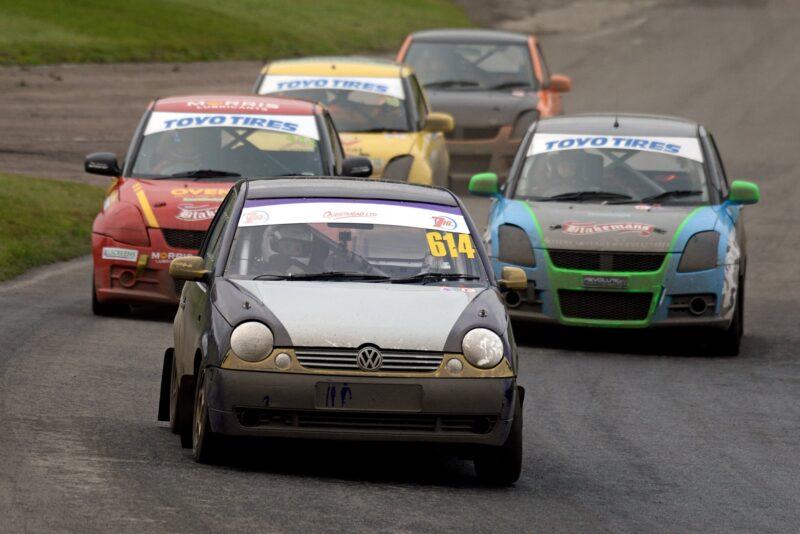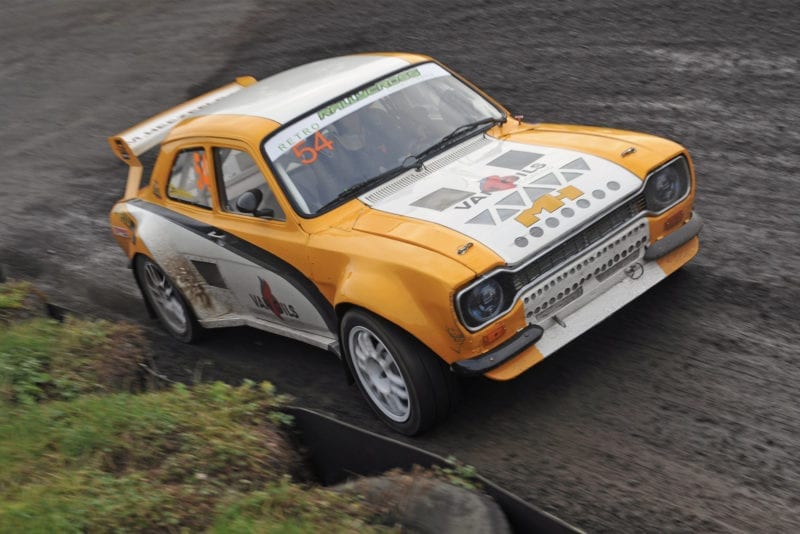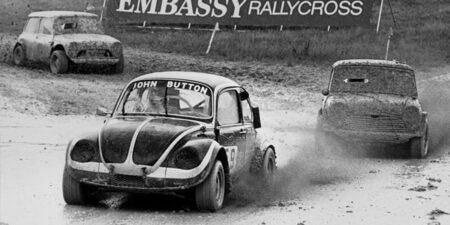The first sound of the morning was a strident yell – a policewoman becoming frustrated with a disobedient trainee dog in an adjacent meadow, but her cries were soon drowned out by the rasp of internal combustion.
The entry was slender – though half a dozen in each class is perfectly adequate for rallycross – and one or two cars broke before the meeting was fully into its stride (including, sadly, John Cross’s lovely Lancia Stratos).
Despite the competitive presence of many a modern hatchback, however, this still felt like a step back into a bygone age. Such a pity that so few turned out to watch.

Abbie McGuinness leads in her VW Lupo
Simon Arron
UK-based Pole Maciej Florczak had a lively day in his Peugeot 106, which stopped on the circuit in both practice and qualifying, before conking out within moments of the start in each of the first two heats.
In the third, the car finally ran properly and he won on the road… before being docked 30sec for failing to take the mandatory ‘joker’ lap. He eventually went on to finish third in the up to 1600cc 2wd final, won by compatriot Tomasz Wielgoszl.
The junior division provided some of the best racing, Abbie McGuinness eventually putting her VW Lupo just clear of what seemed to be a 16-wheel Suzuki Swift in second place.
And although the retro class was deprived of both the Stratos and Ray Morgan’s spectacular Mk3 Escort, the elegant progress of winner Jos Sterkens (Escort Mk1) was a treat to behold, ditto the presence of Simon Hart’s Haynes of Maidstone Escort replica, a lovely homage to inaugural European rallycross champion John Taylor – the former jockey who was drawn to the sport after seeing it on TV while recuperating from a riding injury.
The restoration of such seasonal pursuits is a very fine initiative – and one that merits broader support.







